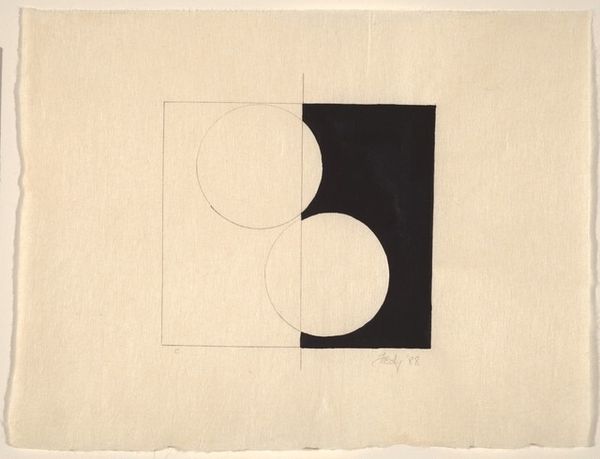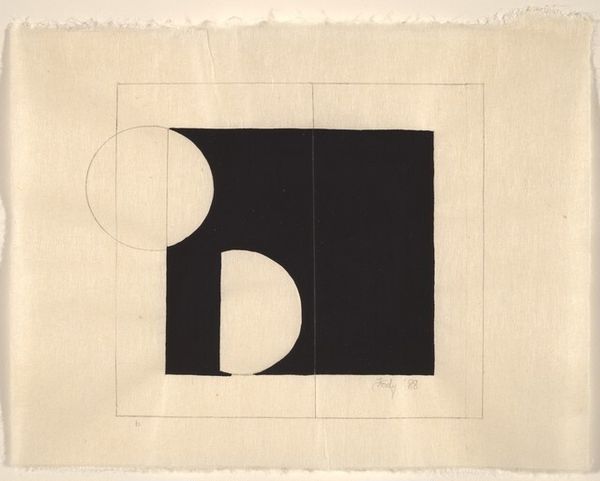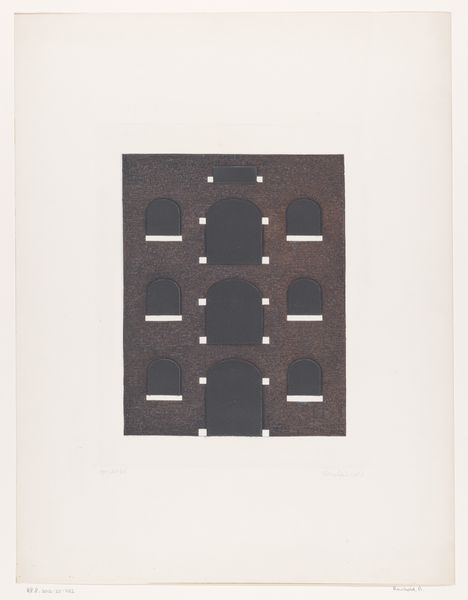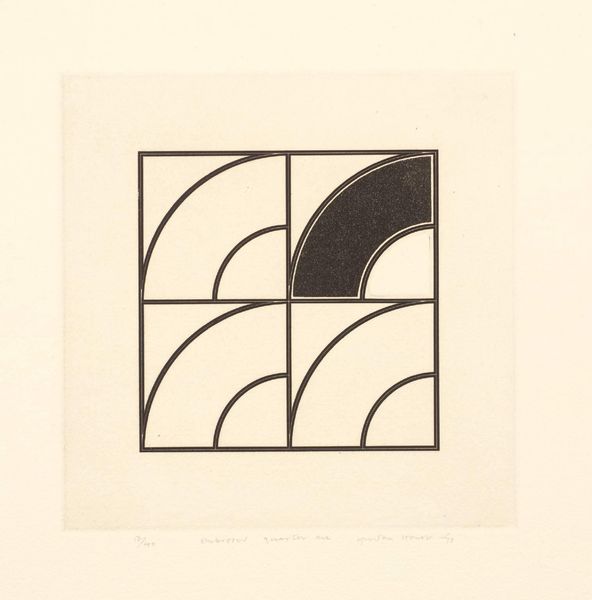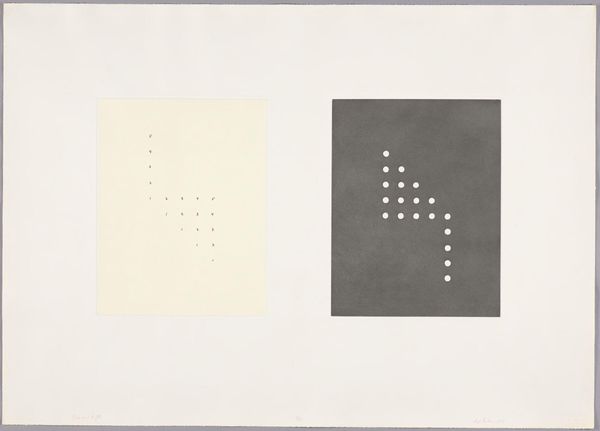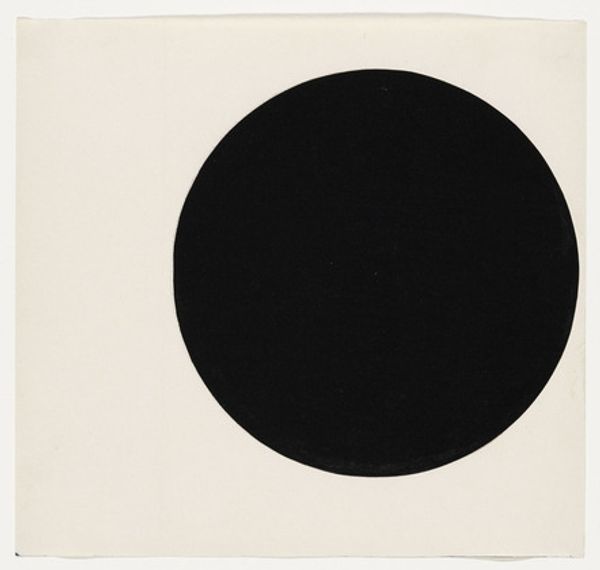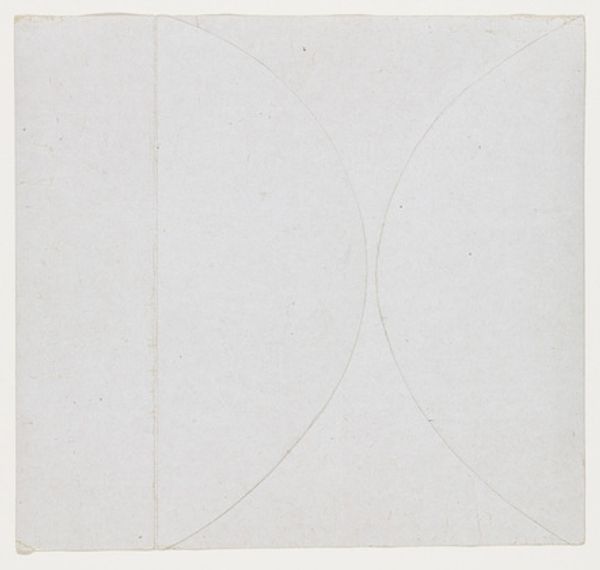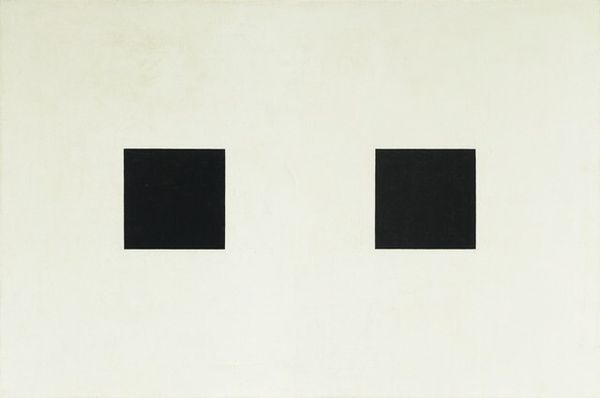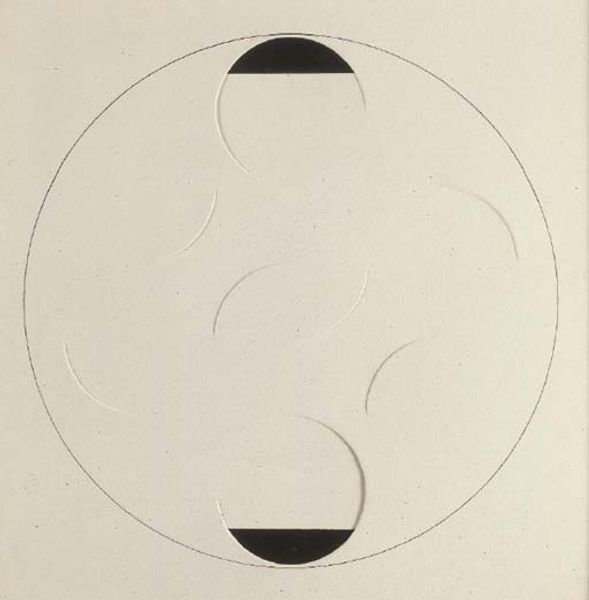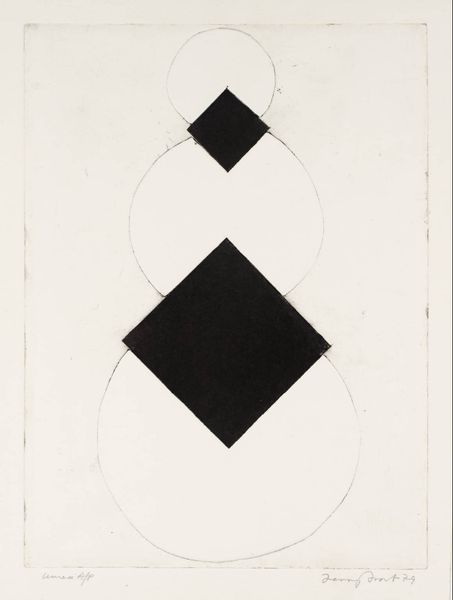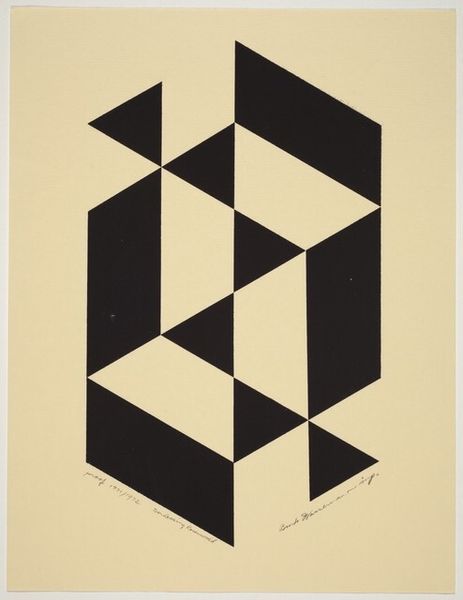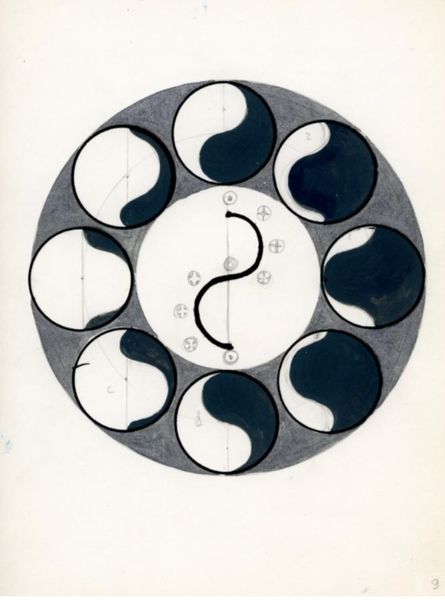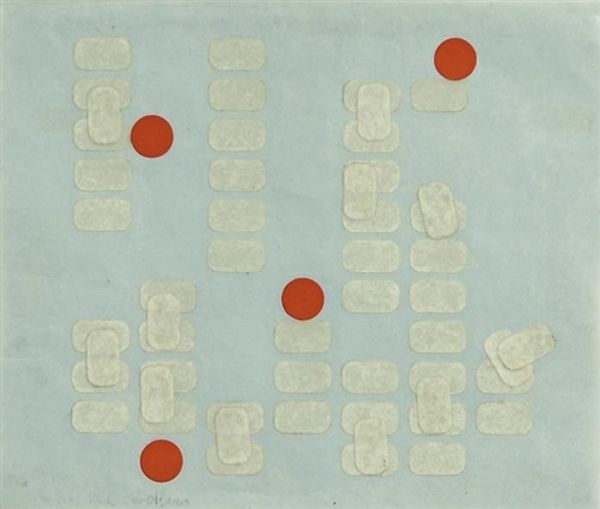
drawing, paper, ink
#
drawing
#
paper
#
ink
#
geometric
#
abstraction
Dimensions: Overall: 18.7 x 24.4 cm (7 3/8 x 9 5/8 in.) overall (overall size): 39.3 x 50.9 cm (15 1/2 x 20 1/16 in.)
Copyright: National Gallery of Art: CC0 1.0
Editor: We are looking at an Untitled drawing by Ann Ledy from 1988, rendered in ink on paper. There is an interesting contrast here. Two of the circles are only partially filled with ink, while the other two are fully black. It looks deceptively simple, but I wonder what exactly went into this drawing. How do you interpret this work? Curator: What strikes me is the overtness of its making. Look at the paper, deliberately raw-edged, and the seemingly mechanical application of ink. This piece embraces its own production. Think about the repetitive nature of the shapes and their arrangement. Ledy uses minimalist geometric forms in a time rife with industrial output; does this mirror production or mock its sometimes sterile nature? Editor: So, you are thinking about how the production of the drawing mirrors broader production in society? Curator: Exactly! The visible labor, the almost utilitarian nature of the geometric forms...it encourages us to consider art-making itself as a kind of work, blurring the boundaries between artistic creation and more commonplace labor. Consider, also, the choice of simple materials. Ink and paper... accessible to most and mass produced in an increasingly digital age. Is it a quiet statement of resistance against high-art exclusivity? Editor: That's a cool point. By embracing these very simple and readily available materials, it democratizes art in some fashion. It takes the pretension out of the final product. Curator: Precisely. It forces us to contemplate what elevates something from craft or common utility to the status of 'art.' And, of course, it might challenge conventional value systems within the art world that historically privileged painting or sculpture over drawing. Editor: I now see that, by looking at materials and processes, one can discover not just about what the artist intended but about the society that birthed it. Curator: Yes. Paying attention to these choices allows the work to comment on itself and its world. It's a quiet revolution, isn't it?
Comments
No comments
Be the first to comment and join the conversation on the ultimate creative platform.
